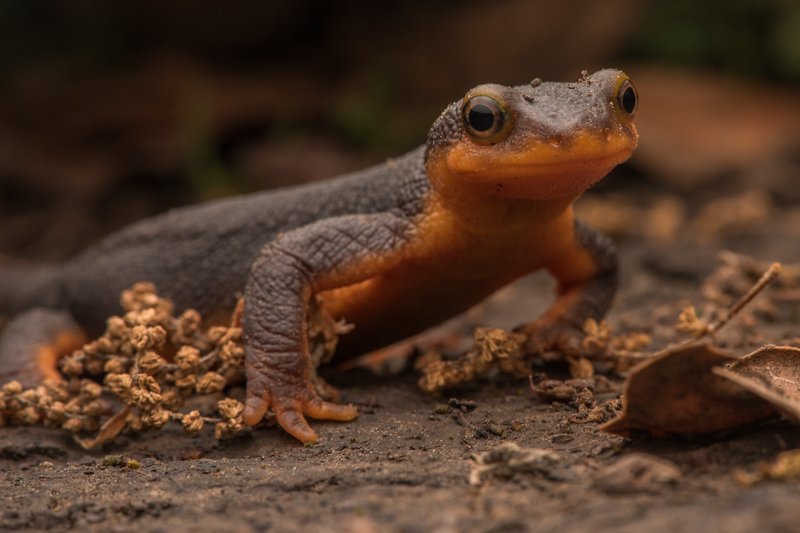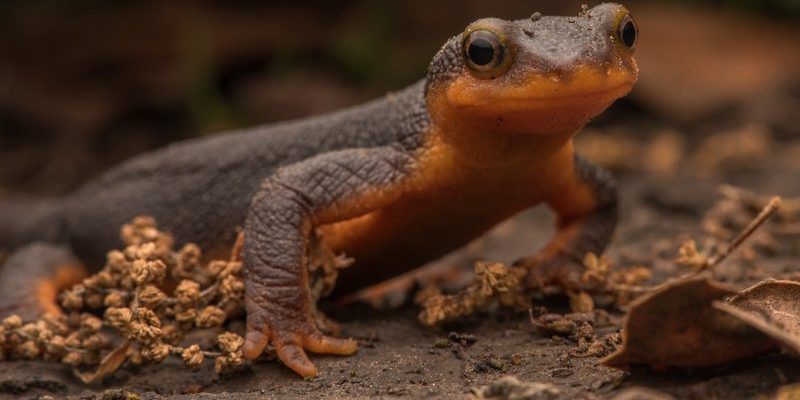
So, what exactly makes the newt so resilient? Think of it this way: if life is a game, newts have mastered some serious levels that keep them in play. They can live both on land and in water, they possess remarkable regeneration skills, and they have strategies to face changing climates. Let’s dive into some of the fascinating adaptations that help these little creatures stand the test of time.
Dual Life: Terrestrial and Aquatic Adaptations
One of the most interesting things about newts is their dual life cycle. They start their lives as eggs in water, developing into hatchlings. As they grow, many species become fully adapted to life on land. This shift is more than just a change of scenery; it equips newts with the skills to thrive in different environments.
In their aquatic stage, newts develop webbed feet and streamlined bodies, perfect for swimming. Their skin is often smooth and moist, helping them breathe underwater. Then, as they transition to a terrestrial lifestyle, they lose some of these features. Their skin can become rougher, providing better protection against drying out on land. This ability to switch between two habitats is a key survival tactic, allowing newts to access various resources and evade predators.
You might be wondering why this matters. Well, having access to both land and water opens up a buffet of food options! Newts can munch on insects, worms, and even smaller amphibians, depending on their environment. This flexibility is crucial when food sources are scarce, making them resourceful survivors.
Regeneration: Nature’s Superpower
Have you ever thought about how impressive it would be to regrow a lost limb? Newts can do just that! They possess an incredible ability to regenerate not only limbs but also parts of their heart, eyes, and spinal cord. This skill is like having a superhero power in the animal kingdom.
When a newt loses a limb, it doesn’t just accept its fate. Instead, it sends signals to its cells to start healing. Over time, those cells regrow into a new limb. This process can take several weeks to months, depending on the species and conditions. The ability to regenerate helps newts survive attacks from predators—if a hungry bird snags a newt’s leg, it can simply grow it back later.
This regeneration capability isn’t just about survival; it also plays a role in reproduction. Male newts often use their limbs to attract females during mating season. A newt with the ability to regenerate limbs can potentially be more attractive to mates, ensuring the continuation of its genes.
Skin Adaptations: Protection and Communication
Newts have some pretty remarkable skin adaptations that serve multiple purposes. For starters, their skin is moist and permeable, which allows for efficient breathing and moisture absorption. This is essential for an amphibian, as they can easily lose water through their skin.
In addition to moisture retention, newt skin often contains toxins that can deter predators. Some species of newts, like the notorious *Eastern Newt*, have bright orange or red coloration, signaling to potential threats that they are poisonous. This strategy is known as aposematism, and it’s a clever way to avoid becoming someone’s dinner.
But newt skin isn’t just about defense. It also plays a crucial role in communication. During mating season, vibrant colors and patterns on their skin can send signals to potential partners. Males often display brighter colors to attract females, making their skin adaptations essential for reproduction.
Behavioral Adaptations: Clever Survival Strategies
Besides their physical traits, newts exhibit several behavioral adaptations that enhance their survival. One of the most significant behaviors is their hibernation strategy. During colder months or periods of drought, many newts will burrow into the ground, entering a state of dormancy. This helps them conserve energy and avoid harsh conditions, emerging once temperatures are more favorable.
Another interesting adaptation involves their feeding habits. Newts are opportunistic feeders, meaning they will eat whatever is available in their environment. This flexibility can include insects, small fish, and even plants. When food is abundant, they’ll take advantage of it; when resources are limited, their ability to adapt their diet is crucial for survival.
And here’s something else: newts can also exhibit territorial behavior during mating season. Males often engage in elaborate courtship displays, which not only attract females but also establish their dominance over other males. This behavioral adaptation helps ensure they have the best chance of successful reproduction.
Climate Adaptability: Thriving in Changing Environments
In an ever-changing world, the ability to adapt to different climates is a game-changer for any species. Newts exhibit impressive adaptability to varying environmental conditions, from wetlands to forests.
Many newt species can tolerate different levels of humidity and temperature changes. For example, some are found in tropical rainforests, while others are adapted to cooler climates. They can adjust their activity levels based on temperature—becoming more active during warmer weather and slowing down when it’s chilly, ensuring they conserve energy and stay safe.
Additionally, newts can also adapt their breeding times based on environmental cues. In areas where seasons change dramatically, newts may breed earlier or later in response to temperature fluctuations and rainfall. This flexibility helps them ensure their young have the best chance of survival, as they’ll hatch when conditions are most favorable.
Predator Avoidance: Staying One Step Ahead
One of the biggest threats to newts is, of course, predators. But just like any skilled survivor, newts have developed strategies to avoid becoming a meal. Their first line of defense is their toxins, which we briefly touched on earlier. This chemical weapon doesn’t only make them unappetizing but can also be fatal to unsuspecting predators.
In addition to their toxins, newts also use camouflage to avoid detection. Their skin often blends in with the environment, whether it’s the hues of mud, grass, or leaves. This natural disguise makes it harder for predators to spot them, allowing newts to hang out in plain sight without raising alarm.
Finally, newts sometimes rely on play dead tactics. When threatened, they may roll onto their backs and become completely still. This behavior can confuse predators, giving the newt a chance to escape when the danger passes. By combining various avoidance techniques, newts significantly improve their odds of survival.
Newts may not be the most glamorous creatures out there, but their adaptations truly make them remarkable survivors. From their dual life cycle to their extraordinary regeneration skills, each adaptation plays a vital role in helping them thrive in a world full of challenges. By using their clever behaviors, incredible skin properties, and adaptability to changing climates, newts prove that survival isn’t just about being the strongest; it’s about being smart and resourceful.
Next time you think about survival strategies in nature, don’t forget the newt—a little hero in the amphibian world, navigating through life with grace and grit.

